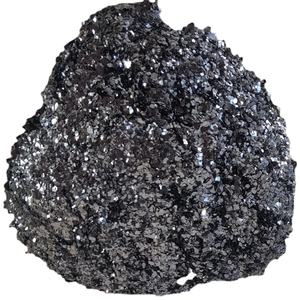Overview of SCC130 Relative Hydrophilicity Conductive Carbon Cloth 10*10cm
Conductive carbon black is a specialized form of carbon black, engineered specifically to enhance the electrical conductivity of materials it is incorporated into. Unlike regular carbon black, which is primarily used as a reinforcing filler and pigment, conductive carbon black features a unique particle structure and surface chemistry that facilitates electron flow, making it indispensable in applications requiring static dissipation, electrostatic control, or improved performance in electronic and electrical devices.
Features of SCC130 Relative Hydrophilicity Conductive Carbon Cloth 10*10cm
Enhanced Conductivity: Provides a network for electron movement within a material, turning an insulator into a conductor or semi-conductor.
Low Loading Levels: Effective at low concentrations, minimizing impact on the host material's properties, such as viscosity, weight, and color.
Particle Size and Structure: Specifically engineered with smaller particle sizes and higher structure, optimizing conductivity pathways.
Stability: Resistant to chemical and environmental degradation, ensuring consistent performance over time and in varying conditions.
Versatility: Compatible with a wide range of matrices, including polymers, resins, adhesives, and coatings.

(SCC130 Relative Hydrophilicity Conductive Carbon Cloth 10*10cm)
The parameter "Relative Hydrophilicity Conductive Carbon Cloth" refers to the ability of this material to conduct electricity under water. It is typically measured in relative humidity, which is the amount of water vapor present in a given volume of air at a particular temperature. In general, materials with high relative hydrophilicity conductivity are more effective at conducting electricity because they have a higher surface area available for electric charge to be transferred through. This means that more electrical current can flow through the material when it is exposed to moisture. Some common factors that can affect the relative hydrophilicity of carbon cloth include its chemical composition, manufacturing process, and environmental conditions such as humidity and temperature. Different types of carbon cloth may also have different levels of relative hydrophilicity depending on their specific properties.

(SCC130 Relative Hydrophilicity Conductive Carbon Cloth 10*10cm)
Applications of SCC130 Relative Hydrophilicity Conductive Carbon Cloth 10*10cm
Antistatic Materials: In plastics, textiles, and packaging to prevent sparks, protecting sensitive electronic components.
Electromagnetic Interference (EMI) Shielding: In coatings and adhesives to shield electronic devices from external electromagnetic interference.
Fuel Cells and Batteries: As a conductive additive in electrodes, improving ion flow and battery performance.
Rubber and Plastic Compounds: In cable insulation, gaskets, and seals where conductivity is required for safety or functionality.
Ink and Coatings: For conductive printing in RFID tags, smart packaging, and printed electronics.
Graphite-Corp is a trusted global chemical material supplier & manufacturer with over 12-year-experience in providing super high-quality graphite powder and graphene products.
The company has a professional technical department and Quality Supervision Department, a well-equipped laboratory, and equipped with advanced testing equipment and after-sales customer service center.
If you are looking for high-quality graphite powder and relative products, please feel free to contact us or click on the needed products to send an inquiry.
L/C, T/T, Western Union, Paypal, Credit Card etc.
It could be shipped by sea, by air, or by reveal ASAP as soon as repayment receipt.
FAQs of SCC130 Relative Hydrophilicity Conductive Carbon Cloth 10*10cm
Q: How does SCC130 Relative Hydrophilicity Conductive Carbon Cloth 10*10cm differ from regular carbon black? A: SCC130 Relative Hydrophilicity Conductive Carbon Cloth 10*10cm is designed with specific properties to enhance electrical conductivity, whereas regular carbon black is mainly used for reinforcement and pigmentation without a primary focus on conductivity.
Q: What factors influence the conductivity of a material when using SCC130 Relative Hydrophilicity Conductive Carbon Cloth 10*10cm? A: Particle size, structure, concentration, and dispersion quality significantly impact conductivity. Smaller particles and better dispersion lead to more efficient electron paths and increased conductivity.
Q: Can SCC130 Relative Hydrophilicity Conductive Carbon Cloth 10*10cm be used in any polymer? A: While it is versatile, compatibility tests are necessary to ensure it works effectively with each specific polymer type, as certain polymers may require customization for optimal performance.
Q: Is SCC130 Relative Hydrophilicity Conductive Carbon Cloth 10*10cm safe to handle? A: Like other carbon blacks, it is generally safe when handled properly. However, appropriate dust control measures should be in place due to its fine particle size, which can become airborne and pose a respiratory risk.
Q: Does adding SCC130 Relative Hydrophilicity Conductive Carbon Cloth 10*10cm change the mechanical properties of a material? A: At low loading levels, the impact on mechanical properties is usually minimal. However, at higher concentrations required for certain high-conductivity applications, changes in properties such as stiffness, elongation, and color may occur.

(SCC130 Relative Hydrophilicity Conductive Carbon Cloth 10*10cm)
Copyright © 2024 By Graphite-Corp